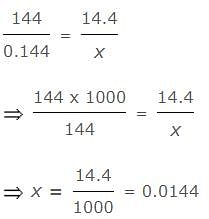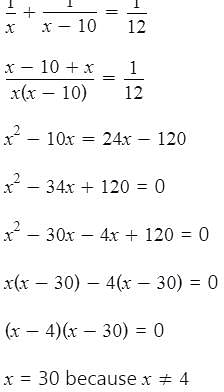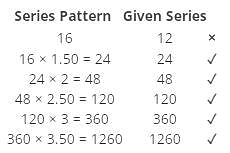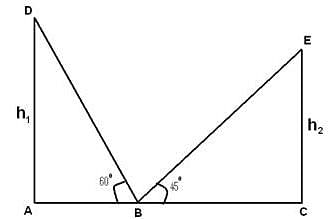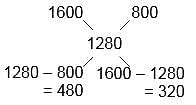Indian Coast Guard Navik GD Mock Test - 3 - Indian Coast Guard Navik GD/DB MCQ
30 Questions MCQ Test Indian Coast Guard Navik GD Mock Test Series 2024 - Indian Coast Guard Navik GD Mock Test - 3
On which number of term does 78 falls in the A.P. 3, 8, 13, 18, … is 78?
What is the sum of first five prime numbers?
If all the digits of a three-digit number are even and different, how many such numbers are possible?
If 18 binders bind 900 books in 10 days, How many binders will be required to bind 660 books in 12 days?
A, B, C are the three angles of a Δ. If A − B = 15° and B − C = 30°. Then ∠A is equal to :
If a 640 meters long train crosses a 160 meters long platform in 25 seconds, what is the speed of the train?
If two pipes function simultaneously, a tank is filled in 12 hours. One pipe fills the tank 10 hours faster than the other. How many hours does the faster pipe alone take to fill the tank?
A can run 1 km in 4 min.54 sec. and B in 5 min. How many meters start can A give B in a km race so that the race may end in a dead heat?
Sumit, Ravi and Puneet invest ₹ 45000, ₹ 81000 and ₹ 90000 respectively to start a business. At the end of the year the total profit is ₹ 4800. 30% of the total profit gives in charity and rest is divided among them. What will be the share of Sumit?
A shopkeeper sold an article for Rs. 20,400 and incurred a loss of 15%. At what price should he sell it so that he suffers only 5% loss?
Directions: Find the wrong term in the given series.
12 24 48 120 360 1260
The angles of elevation of the tops of two vertical towers as seen from the middle point of the lines joining the foot of the towers are 45° & 60°.The ratio of the height of the towers is
Nitu did 1/2 of the work yesterday and one-third of the work today. How much work will she have to do tomorrow to complete the work?
A card is selected randomly from a deck of cards. What is the probability that the card is numbered?
In a dairy farm, 40 cows eat 40 bags of husk in 40 days. In how many days one cow will eat one bag of husk?
In the adjoining figure ∠A + ∠B + ∠C + ∠D + ∠E + ∠F = ?

If the area of a square is the same as the area of a rectangle and the side of the square is twice the breadth of the rectangle, what is the ratio of the length to the breadth of the rectangle?
Manish has a total of 160 coins of 10 rupees and 5 rupees. If he has a combined amount of Rs. 1280, how many 5 rupee coins does he have?
What is the midpoint coordinate of (1,2) and (5,2)?
Which gas are produced when metal react with acids?
Which man-made substance is commonly used in the production of plastic bottles?
Which of the following cell organelles form the lysosome?
The tendency of an offspring to resemble its parent is known as
Which of the following terms refers to an individual who has both male and female reproductive structures?
What is the study of the development and changes in organisms before they are born or hatched called?
In photosynthesis dark reaction, is called so because-



 then the value of x is:
then the value of x is: